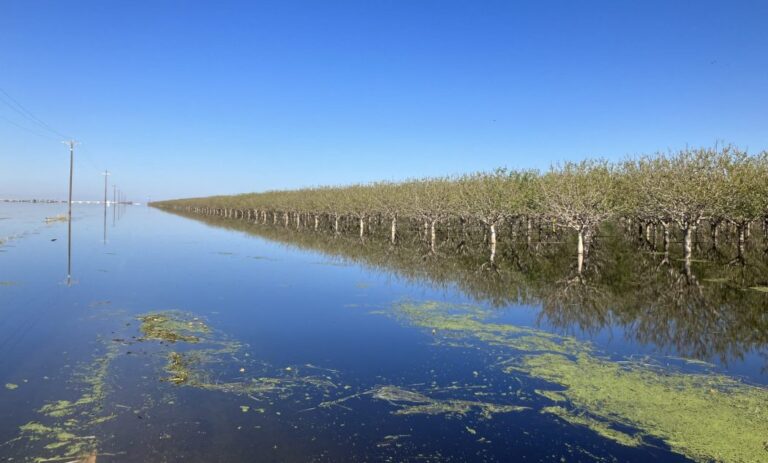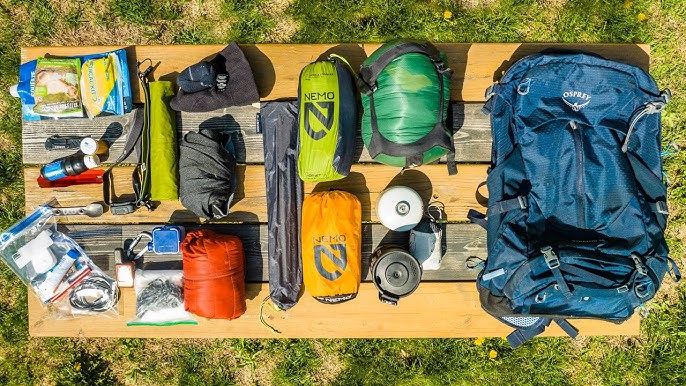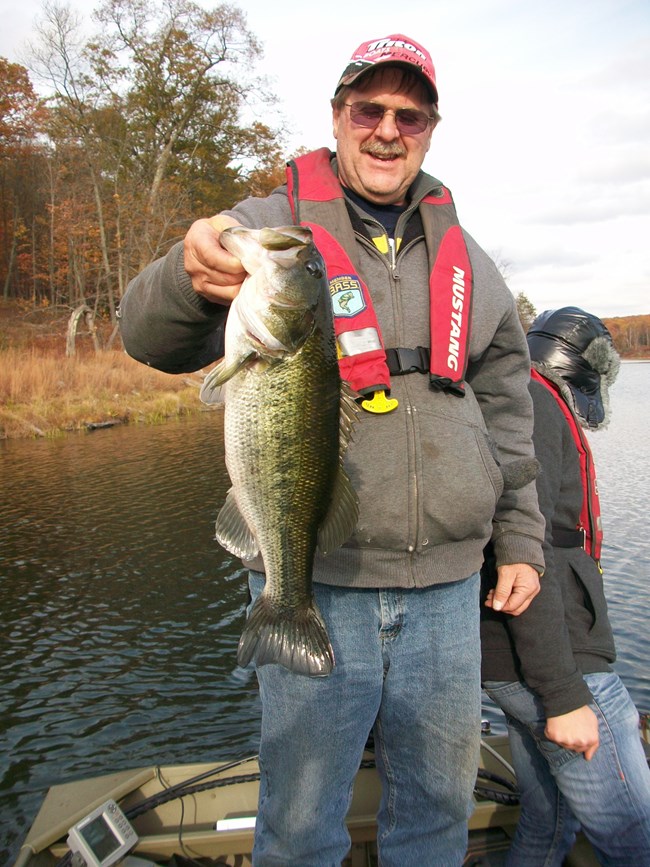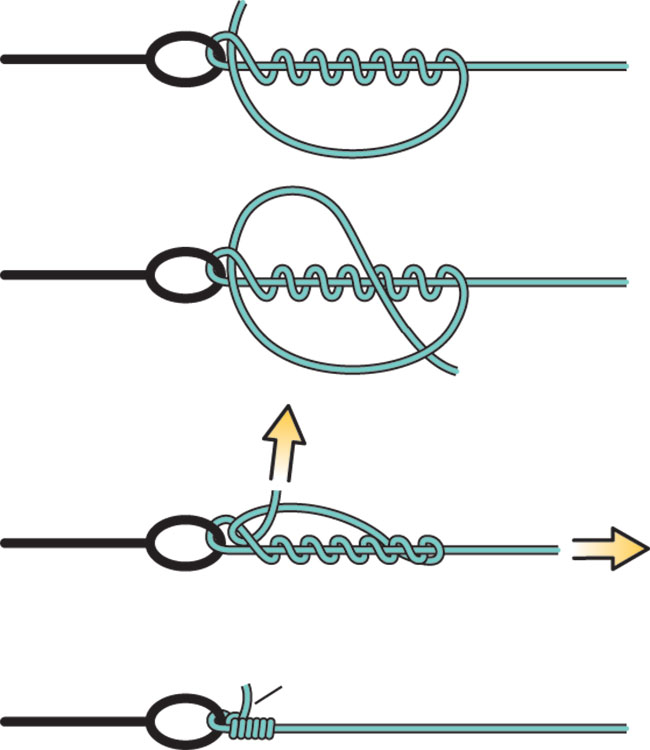Best Bait For Rainbow Trout
The best bait for rainbow trout is typically live worms or artificial lures like PowerBait. Rainbow trout are highly sought after by anglers for their beautiful colors and thrilling fights.
Whether you’re an experienced angler or a beginner, using the right bait is crucial to attract these elusive fish. The most successful bait options for rainbow trout are live worms and artificial lures like PowerBait. Live worms are an excellent choice, as they are a natural food source for trout and can be easily found at bait shops or collected yourself.
On the other hand, artificial lures like PowerBait are designed to mimic the scent and appearance of real bait, making them highly effective in enticing rainbow trout. We will explore in detail the best baits for rainbow trout and provide tips on how to use them effectively to increase your chances of landing a beautiful rainbow trout.
Understanding The Rainbow Trout’s Feeding Habits
Understanding the feeding habits of rainbow trout is essential for choosing the best bait. Rainbow trout have diverse diets that include small fish, insects, and crustaceans, so using a versatile bait like worms or artificial lures can increase your chances of success.
Rainbow trout are opportunistic feeders, meaning they will consume a wide range of prey depending on availability and conditions. To gain a better understanding of their feeding habits, let’s explore the key factors influencing their diet:
Key Factors Influencing Rainbow Trout’s Diet
- Habitat: The habitat of rainbow trout greatly influences their diet. In rivers and streams, they primarily consume aquatic insects, such as mayflies, caddisflies, and stoneflies. In lakes, their diet expands to include small fish, crayfish, and even small mammals like mice that happen to fall into the water.
- Seasonality: Rainbow trout adjust their diet according to seasonal changes. During colder months, their prey options are limited to mainly insects and smaller fish. As the weather warms, they have access to a more diverse menu, including larger fish and even terrestrial insects that fall onto the water’s surface.
- Feeding time: Rainbow trout are known to be most active during the early morning and late evening, with feeding patterns influenced by the availability of light and other environmental factors. Knowing the best feeding times can be advantageous when selecting the right bait.
- Water temperature: Water temperature significantly impacts the availability and behavior of prey species. Rainbow trout tend to feed more actively in cooler water, while their appetite may decrease in warmer conditions. This understanding can help optimize bait selection for better chances of a successful catch.
- Fish size: The size of the fish also plays a role in their diet. Juvenile rainbow trout primarily feed on small aquatic insects, gradually transitioning to larger prey as they grow. Understanding this shift in food preference is crucial when choosing the appropriate bait.
Identifying the preferred food sources for rainbow trout involves considering their habitat, seasonal changes, feeding times, water temperature, and fish size. By taking these factors into account, anglers can enhance their fishing experience and increase the likelihood of attracting rainbow trout.
With a well-informed approach, you can optimize your bait selection and improve your chances of a fruitful day on the water.
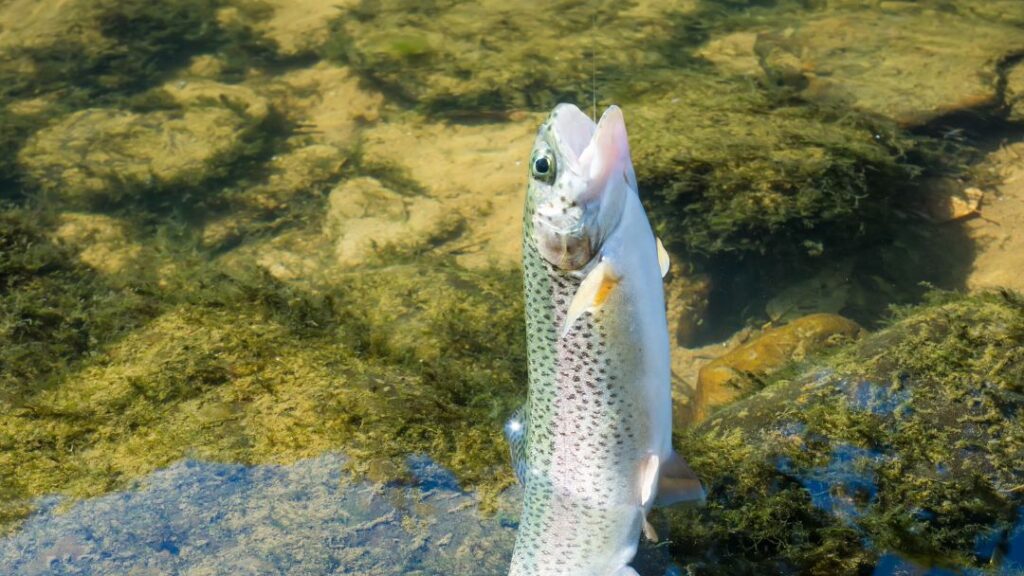
Natural Baits For Rainbow Trout
Discover the most effective natural baits for catching rainbow trout with ease. From live bait like worms and minnows to artificial lures, these options are sure to attract and hook these beautiful fish.
Rainbow trout are one of the most sought-after fish species in freshwater fishing. They are known for their aggressive nature and willingness to strike at various types of bait. When it comes to targeting rainbow trout, understanding the effectiveness of different natural baits can greatly increase your chances of success.
In this blog post, we will examine three popular natural baits for rainbow trout: worms, insects, and minnows. Let’s dive in and explore the benefits of each bait option.
Examining The Effectiveness Of Worm Bait
Worms are perhaps the most popular and widely used bait for rainbow trout. Here’s why they are so effective:
- Versatility: Worms can be easily obtained and used in various fishing situations, such as casting, drifting, or even using a bobber setup.
- Natural appeal: Rainbow trout are naturally drawn to worms due to their wriggling and squirming movements, making them irresistible targets.
- Scent attraction: Worms emit natural scents that rainbow trout find enticing, further increasing their effectiveness as bait.
- Accessibility: Worms are readily available at bait shops and can also be dug up from the garden, making them a convenient and cost-effective option.
Using Insects As Bait For Rainbow Trout
Insects, both live and artificial, can be incredibly effective when targeting rainbow trout. Consider the following:
- Mimicking natural prey: Rainbow trout are opportunistic feeders that often consume insects found near or on the water surface. Using realistic insect imitations can attract their attention and trigger strikes.
- Matching the hatch: Observing the surrounding insect activity can give insights into what rainbow trout are actively feeding on. By using matching insect patterns, you can increase your success rate significantly.
- Variety of options: From flies to grasshoppers, the range of insects available as bait for rainbow trout is vast. Experimenting with different options can help you determine the most effective ones for your fishing location and conditions.
Understanding The Benefits Of Minnows And Other Small Fish
Although using live minnows and other small fish as bait requires additional considerations, they can yield excellent results when targeting rainbow trout. Here’s why:
- Natural movement: Live baitfish like minnows replicate the natural swimming motion that rainbow trout are instinctively drawn to, making them hard to resist.
- Larger targets: Rainbow trout often prefer larger prey, and using minnows or small fish as bait allows you to present a more substantial meal, increasing your chances of enticing a strike.
- Adaptability: While live baitfish may require more skill and finesse to present effectively, they can be used in various fishing techniques, such as trolling, casting, or drifting, making them versatile options.
When it comes to targeting rainbow trout, using natural baits such as worms, insects, and minnows can significantly improve your odds of success. By understanding the effectiveness and benefits of each bait option, you can make informed choices that cater to the preferences and behaviors of rainbow trout.
So, next time you head out to fish for rainbow trout, consider trying out one of these natural baits and increase your chances of reeling in a prized catch. Happy fishing!
Artificial Baits For Rainbow Trout
Artificial baits are the best choice for catching rainbow trout. These baits mimic natural prey, attracting the trout and increasing your chances of success.
Exploring The Different Types Of Lures
When it comes to attracting rainbow trout, using artificial lures can be a game-changer. These lures come in various types, each designed to mimic the natural prey of rainbow trout. Let’s explore the different types of lures that can help you land those elusive rainbow trout:
- Spinners: Spinners are a popular choice among trout anglers. These lures consist of a metal blade that rotates when retrieved, creating flashes and vibrations to attract the trout’s attention. They come in a wide range of colors and sizes, allowing you to match the hatch and experiment until you find the perfect combination. Some effective spinners for rainbow trout include Mepps Aglia, Panther Martin, and Blue Fox Vibrax.
- Soft Plastic Baits: Soft plastic baits are another effective option for targeting rainbow trout. These lures replicate the movement and appearance of various aquatic creatures like worms, grubs, and minnows. When rigged properly, they can be irresistible to rainbow trout. Try using soft plastic worms, minnow imitations, or even leech imitations to entice these elusive fish.
- Crankbaits: Crankbaits are hard-bodied lures that imitate small fish swimming in the water. They have a lip, which causes them to dive when retrieved. The diving action, coupled with the realistic appearance, triggers the predatory instincts of rainbow trout. By varying the retrieval speed, you can control how deep the crankbait dives, allowing you to target trout at different depths.
- Jigs: Jigs are versatile lures that can be effective for rainbow trout in various conditions. These lures consist of a weighted head and a skirt or soft plastic body. They can be jigged vertically or retrieved horizontally, depending on the fishing situation. Jigs in natural colors, such as brown, green, or black, tend to work well for rainbow trout.
Evaluating The Effectiveness Of Spinners
Spinners have long been a favorite among anglers targeting rainbow trout, and for good reason. Here are some reasons why spinners are highly effective lures for rainbow trout:
- Flash and Vibration: The spinning blade of a spinner creates flash and vibration in the water, grabbing the attention of rainbow trout even from a distance. This combination of visual attraction and vibrational feedback triggers their predatory instincts, making them more likely to strike.
- Versatility: Spinners are available in various sizes, colors, and blade designs, allowing anglers to tailor their approach to the specific conditions and preferences of the trout. By experimenting with different combinations, you can find the perfect spinner that consistently entices rainbow trout.
- Ease of Use: Spinners are easy to use and suitable for anglers of all skill levels. Whether you’re casting and retrieving, trolling, or even jigging, spinners can be effective in a wide range of fishing techniques.
Using spinners successfully for rainbow trout requires some experimentation and understanding of the fish’s behavior in your specific fishing location. By evaluating the effectiveness of different spinners and adjusting your presentation accordingly, you can increase your chances of landing that prized rainbow trout.
Using Soft Plastic Baits To Attract Rainbow Trout
Soft plastic baits are an excellent choice when targeting rainbow trout. Here’s why they can be so effective in enticing these fish:
- Lifelike Movement: Soft plastic baits, such as worms, grubs, and minnow imitations, imitate the natural movements of prey in the water. The soft and supple texture of these baits gives them a lifelike action that rainbow trout find hard to resist.
- Versatility: Soft plastic baits offer versatility in terms of rigging options and fishing techniques. Whether you prefer using them on a jighead, drop-shot rig, or Texas rig, you can adapt your presentation to the conditions and the trout’s feeding behavior.
- Durability: Soft plastic baits are more durable than live bait, allowing you to make multiple casts without worrying about constantly rebaiting. This durability makes them more cost-effective and convenient for anglers who fish for rainbow trout regularly.
To effectively use soft plastic baits for rainbow trout, consider the size and color of the bait to match the natural prey in the water. Experiment with different retrieval speeds and techniques to find the presentation that triggers a strike.
Remember to stay observant and adapt your approach based on the trout’s response to your soft plastic bait.
With the right artificial lures in your tackle box, you’ll be well-equipped to entice rainbow trout on your next fishing adventure. Whether you opt for spinners, soft plastic baits, or other artificial lures, being open to experimentation and adjusting your presentation based on the fish’s behavior will greatly increase your chances of success.
Fishing Techniques And Strategies
Learn the best bait for rainbow trout fishing. Discover effective techniques and strategies to increase your chances of a successful catch.
Rainbow trout fishing requires specific techniques and strategies to increase your chances of success. By applying the right fishing method, understanding the importance of presentation, and mastering the techniques for casting and retrieving bait, you can greatly improve your catch rate.
In this section, we will delve into these aspects in detail.
Applying The Right Fishing Method For Rainbow Trout
- Fly fishing: This method involves using artificial flies made of feathers, fur, and other materials as bait. It requires precision casting and imitating the natural movement of insects in the water.
- Spin fishing: With this technique, you use a spinning reel and rod, along with lures or bait such as spoons, spinners, or soft plastics. It provides versatility and is relatively easy to learn.
- Bait fishing: This method utilizes live bait or artificial bait such as worms, nightcrawlers, or power bait. It can be done from the shore or a boat and is highly effective for attracting rainbow trout.
Understanding The Importance Of Presentation
- Stealth and patience: Rainbow trout are easily spooked, so it’s crucial to approach the fishing spot quietly and avoid sudden movements. Patience is also key, as trout may take their time evaluating the bait before striking.
- Natural drift: When using bait or flies, allowing them to drift naturally with the current increases the chances of attracting trout. Avoid dragging the bait and instead let it flow naturally downstream.
- Matching the hatch: Observing the insects and other aquatic creatures present in the water can help you choose bait that closely resembles their appearance. This increases the likelihood of trout taking the bait.
Techniques For Casting And Retrieving Bait
- Casting accuracy: Practice casting in different conditions to improve your accuracy. Pay attention to the distance, avoiding excessive force that may scare the fish.
- Dead drift technique: When using bait or flies, allowing them to drift naturally without any movement is known as the dead drift technique. This imitates injured or drifting food sources and can trigger a strike.
- Slow retrieve: This technique involves reeling in the bait or lure at a slow and steady pace. It mimics the movement of injured or slow-moving prey and entices trout to strike.
Remember, mastering these fishing techniques and strategies takes time and practice. Experiment with different methods and adapt to the specific conditions of the fishing spot. By honing your skills and understanding the behavior of rainbow trout, you’ll greatly increase your chances of a successful fishing trip.
Tips For Choosing The Best Bait
When it comes to trout fishing, using the right bait can make all the difference in your success. To maximize your chances of catching rainbow trout, it’s important to consider the water conditions and temperature, match the bait to the trout’s feeding patterns, and test different baits while observing the results.
Here are some tips to help you choose the best bait for rainbow trout:
Considering The Water Conditions And Temperature
- Water clarity: Opt for bright-colored or flashy baits in murky water to increase visibility, while natural-colored baits work best in clear water.
- Water temperature: Use slow-moving baits in colder water and faster-moving baits in warmer water to entice trout.
Matching The Bait To The Trout’s Feeding Patterns
- Insect imitations: Select bait that mimics the prevalent insects in the area, such as flies or mayflies, as trout often feed on these insects.
- Small fish imitations: Use bait that resembles small fish like minnows or fry when trout are actively hunting for prey.
Testing Different Baits And Observing Results
- Variety is key: Experiment with a range of baits, including worms, power bait, or artificial lures, to see what works best on a given day.
- Keep track of results: Note down the baits used, fishing conditions, and the success rate for each bait to identify patterns and adjust your approach accordingly.
Remember, trout can be picky eaters, so don’t be discouraged if one bait doesn’t work. Keep testing and adapting until you find the right bait that triggers their appetite. Happy fishing!
Safety And Legal Considerations
Rainbow trout fishing requires careful consideration of safety and legal guidelines. Choosing the best bait is essential for successful angling.
Fishing for rainbow trout can be an exciting and rewarding experience, but it is essential to prioritize safety and adhere to legal requirements. Here are some important considerations to keep in mind:
Adhering To Fishing Regulations And Licenses
- Obtain a fishing license: Before heading out to catch rainbow trout, ensure you have a valid fishing license for the specific location you plan to fish in. This ensures you are fishing legally and supports conservation efforts.
- Know the regulations: Familiarize yourself with the specific fishing regulations for rainbow trout in your area. These regulations may include size limits, catch limits, and specific fishing seasons. Respecting these rules not only ensures compliance but also helps conserve the trout population.
Safely Handling And Releasing Rainbow Trout
- Proper handling techniques: When catching rainbow trout, it is crucial to handle them with care to minimize stress and potential harm. Remember the following:
- Wet your hands before handling trout to protect their delicate slime coating.
- Use barbless hooks for easy and safe hook removal.
- Avoid squeezing or excessively handling trout, as this can cause injury.
- Quick and gentle release: If you catch a trout that you plan to release, you should do so quickly and gently to increase its chances of survival. Follow these steps:
- Keep the trout in the water as much as possible.
- Avoid dropping the trout onto the ground or onto hard surfaces.
- Support the trout by gently cradling it in the water until it swims away on its own.
Respecting The Environment And Practicing Ethical Fishing
- Leave no trace: As responsible anglers, it is our duty to minimize our impact on the environment. Practice the principles of “leave no trace” by:
- Properly disposing of any trash or fishing line.
- Avoiding unnecessary disturbance to surrounding wildlife and vegetation.
- Be mindful of the impact of your footsteps along the water’s edge.
- Promote catch and release: Consider practicing catch and release whenever possible. This helps conserve the rainbow trout population and ensures future generations can enjoy the thrill of catching them. Remember:
- Use appropriate gear and techniques that minimize harm to the trout.
- Release undersized or excess trout to maintain a healthy population.
By adhering to fishing regulations and licenses, safely handling and releasing rainbow trout, and respecting the environment, we can enjoy the experience of fishing for rainbow trout while promoting sustainability and conservation. Stay informed, be responsible, and enjoy the excitement that rainbow trout fishing has to offer.
Conclusion
Finding the best bait for rainbow trout can greatly enhance your fishing experience. By understanding the preferences and feeding behaviors of these beautiful fish, you can select the most effective bait that will help you hook that prized trout. Whether you choose to use live bait like worms or insects or opt for artificial lures such as spinners or spoons, experimenting with different options will often lead to success.
Keep in mind environmental factors like water temperature and clarity, as well as the time of year, when selecting your bait. Remember to consider the presentation of your bait, using techniques like drifting or slow retrieves to mimic natural movement.
By employing these tips, you can increase your chances of catching rainbow trout and enjoy many memorable fishing trips. Happy angling!


